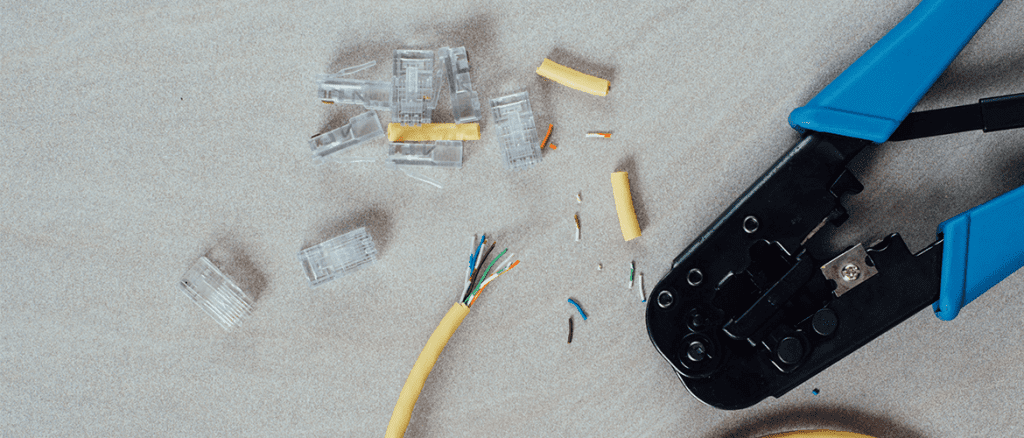Customer Service

There are many forms of connections depending on the material used to carry the signal from one device to another. This usually depends on speed, bandwidth, and network requirement. In the case of copper connections, copper is used to carry a signal within a limited distance and bandwidth.
Although it is limited, it remains the most commonly used form of connection compared to fiber or ethernet. Why, you ask? It is the most economical option and it already exists in many networks. Also, despite its limitations in terms of distance, bandwidth, and signal disruption, manufacturers have done well in finding ways to improve its performance by increasing the capacity of unshielded and shielded twisted-pairs (UTP and STP).


1. Electromagnetic Interference (EMI):
Challenge: Environments with a lot of machinery produce EMI, which interferes with copper signals.
Solution: In that case, shielded twisted-pair (STP) is required to minimize signal disruption from EMI. Another option is choosing fiber optic connectors as it not disrupted by EMI.
2. Termination method
Challenge: There are many different methods to terminate copper connectors depending on the manufacturer. Therefore, electricians and data technicians spend more time training and terminating connectors in different methods.
Solution: Selecting a tooless copper connector with a unified termination method across all connectors types such as the Leviton Atlas-X.
3. Re-terminating Copper Connectors
Challenge: Once a copper connector has been terminated, it cannot be reused or re-terminated if it wasn’t terminated properly. This adds cost and time to customers.
Solution: There are a handful of copper connectors, such as the Atlas-X1, that can be re-terminated because there is no direct impact on the contact zone.
4. Quality & Longevity
Challenge: Many people choose offshore products for their low cost but they are also lower in quality; they usually don’t meet the network standards, speed, or bandwidth. Therefore, they often end up failing resulting in a shorter product life.
Solution: CSA and TIA approved products are recommended to meet quality and network standards. Also, these products tend to have a longer product life.
Is it a new install or retrofit?
It is always easier to instal a new copper connection, but when installing a retrofit, the existing network becomes the limiting factor. For example, it is useless to install a CAT6A copper connector in a network with CAT5E because the signal would not be stronger than what the CAT5E offers. Talk to our EBH Data Comm experts to learn how to upgrade your network.
Network Environment
Different copper connectors are built for different industry types. Basic CAT5E UTP is recommended for residential applications. For stable industrial and commercial environments, CAT6A is recommended but CAT6 can also be used depending on application. If environment has EMI exposure, shielded twisted-pair (STP) is recommended.
Security requirement on-site
End-customer’s security policies determine if the site can have LAN connectivity or cellular connection and which is required. Most challenging part of industrial remote access is meeting site’s firewall requirements. Regardless, we have a solution for each security requirement.
Distance Requirement
A repeater or another active component is required to amplify the signal for distances greater than a 100 meters. It is recommended to consider other options such as fiber optics if distance is longer than 1km.
Future Proofing
One must not neglect future expansion plans. If expanding the network or plant might be considered later in the future, it might be worthwhile to choose copper connectors that would serve that expanded network so that you are not restricted later by existing bandwidth.
Project certification and warranty requirements
Some projects, such as government projects, require a 25 year warranty and/or certification to ensure network quality standards are being met. In this case, an end-to-end category rated system would be required.


| Category | Speed | Bandwidth |
|---|---|---|
| CAT5E | 10Mb, 100Mb, 1,000Mb | 100MHz |
| CAT6 | 10Mb, 100Mb, 1,000Mb | 250MHz |
| CAT6A | 10Mb, 100Mb, 1,000Mb, 10Gb | 500MHz |
Our Data Communications members are experts in all types of connections; they are dedicated to offering you the best solutions recommended for your application keeping future plans in mind and costs down.
Customer Service
1.888.467.7626